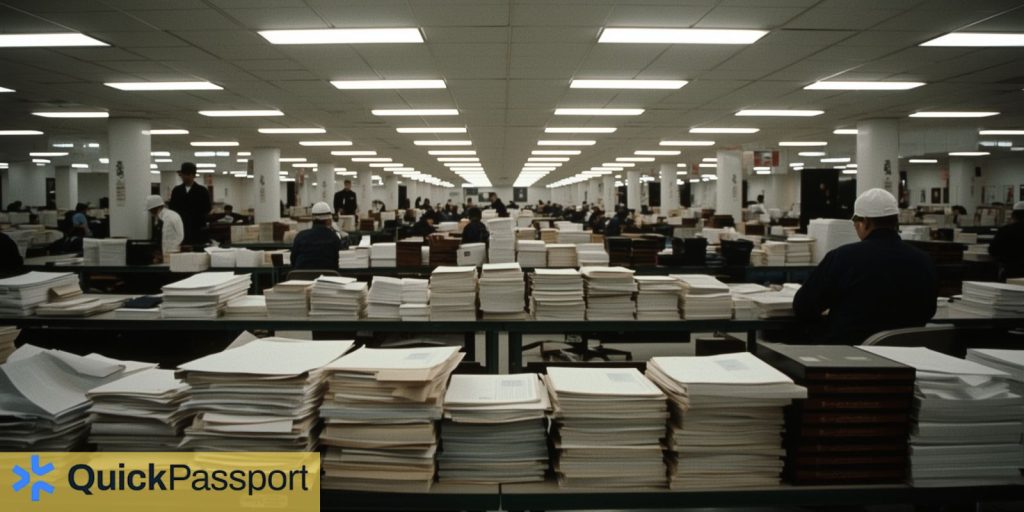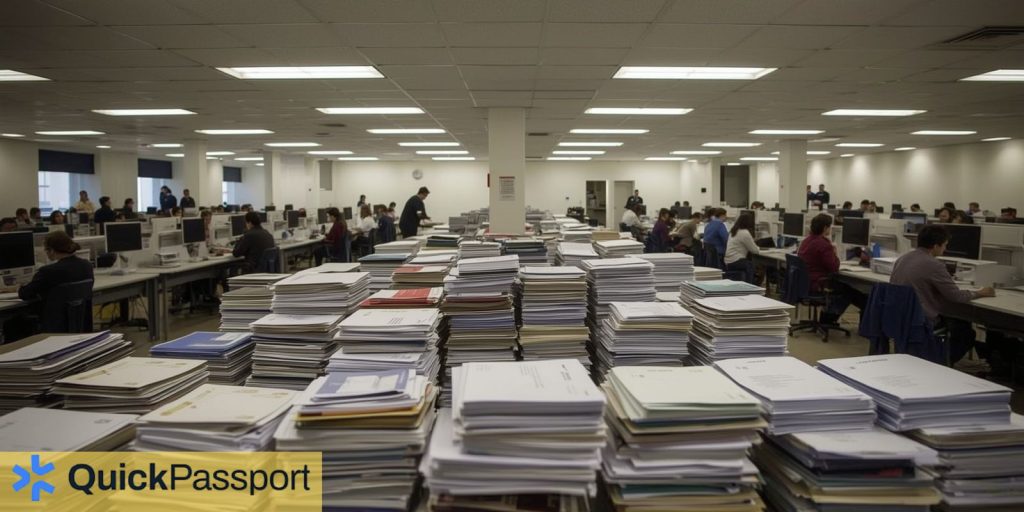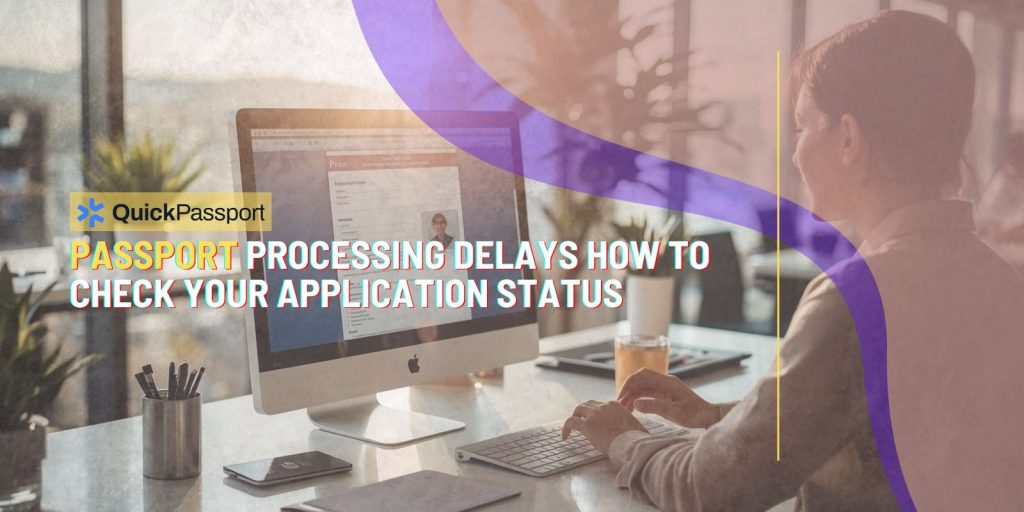Passport processing delays have become an increasingly common concern for travelers worldwide, leaving many applicants anxiously wondering about the status of their applications. Whether you’re planning a last-minute business trip, a long-awaited vacation, or need to renew an expiring passport, understanding how to effectively monitor your application’s progress is crucial for peace of mind and proper travel planning.
The passport application process involves multiple stages, from initial submission to final approval and delivery. During peak travel seasons, government processing centers often experience significant backlogs, leading to extended wait times that can stretch far beyond the standard processing periods. These delays can be particularly stressful when travel dates are approaching, making it essential to know exactly where your application stands in the system.
Checking your passport application status has become more streamlined with digital tracking systems, but many applicants remain unaware of the various methods available to monitor their progress. From online portals to phone services and third-party tracking options, there are multiple ways to stay informed about your application’s journey through the processing pipeline.
Understanding the typical timeline for passport processing, recognizing common delay factors, and knowing when to take action can help you navigate the system more effectively. Processing times can vary significantly based on factors such as application type, time of year, staffing levels at processing facilities, and unexpected circumstances that may impact government operations.
For Seattle residents and travelers throughout the Pacific Northwest, QuickPassport – Seattle provides expert guidance and expedited services to help navigate these challenging processing times. Their experienced team understands the intricacies of passport applications and can offer valuable insights into managing delays and tracking your application status effectively.
Key Takeaways
- Multiple tracking methods available: Use official government websites, phone services, or mobile apps to check your passport application status regularly and stay informed about processing progress.
- Processing times vary significantly: Standard processing can range from 6-11 weeks for routine applications, while expedited services typically take 5-7 weeks, though delays may extend these timeframes considerably.
- Peak season impacts: Spring and summer months see the highest application volumes, leading to longer processing times and increased likelihood of delays affecting travel plans.
- Documentation requirements matter: Incomplete applications or missing documentation are primary causes of processing delays, making thorough preparation essential for timely approval.
- Emergency options exist: Life-or-death emergencies and urgent travel situations may qualify for same-day or next-day passport services through regional agencies.
- Third-party services help: Professional passport expediting services like QuickPassport – Seattle can navigate complex situations and provide faster processing options for time-sensitive applications.
- Status updates indicate progress: Understanding different status messages helps interpret where your application stands and what actions, if any, may be required from your end.
- Proactive monitoring prevents problems: Regular status checks allow early identification of issues and provide opportunities to address problems before they cause significant delays.
Understanding Passport Processing Delays
Passport processing delays occur when applications take longer than the standard timeframes published by the State Department. These delays can result from various factors, including increased application volumes, staffing shortages, security clearance requirements, and administrative backlogs at processing facilities across the country.

The most common causes of delays include incomplete applications, missing supporting documentation, name discrepancies between application forms and supporting documents, and issues with photographs that don’t meet official requirements. Additionally, first-time applicants often experience longer processing times due to more extensive background verification requirements.
Seasonal fluctuations play a significant role in processing delays, with spring and early summer representing peak application periods as families prepare for vacation travel. During these busy seasons, processing facilities may receive double or triple their normal application volumes, creating bottlenecks that extend wait times for all applicants.
Government staffing levels and operational changes can also impact processing speeds. Budget constraints, training requirements for new staff, and facility relocations or upgrades can temporarily slow down processing operations. Understanding these factors helps set realistic expectations for application timelines.
Official Methods to Check Your Passport Status
The primary method for checking passport application status is through the official State Department website at travel.state.gov. This online portal provides real-time updates on application progress and requires your last name, date of birth, and either your Social Security number or the last four digits of your Social Security number to access your information.
The online status checker displays various messages indicating different stages of processing, from “In Process” to “Approved” and “Shipped.” Each status provides specific information about your application’s current location in the processing pipeline and estimated completion timeframes when available.
For applicants who prefer phone-based inquiries, the National Passport Information Center operates a customer service line at 1-877-487-2778. This service provides the same status information available online but allows for direct communication with representatives who can explain complex situations or address specific concerns about processing delays.
Mobile applications have also become available for checking passport status, offering convenient access to tracking information from smartphones and tablets. These apps typically mirror the functionality of the online portal while providing push notifications for status updates and important deadlines.
Regional passport agencies offer in-person status inquiries for applicants with urgent travel needs or complex situations requiring direct assistance. However, appointments at these facilities are typically reserved for emergency travel situations and require proof of immediate travel plans.
Interpreting Status Messages and Processing Stages
Understanding the various status messages displayed in passport tracking systems helps applicants gauge their application’s progress and identify potential issues requiring attention. The most common status indicators include “Not Available,” “In Process,” “Approved,” and “Shipped,” each representing different stages of the application journey.
“Not Available” typically appears immediately after application submission and indicates that the application hasn’t yet entered the processing system. This status usually lasts 7-10 business days for routine applications and 2-3 business days for expedited applications before transitioning to active processing stages.
“In Process” represents the longest phase of passport processing, during which applications undergo document verification, background checks, and administrative review. This status can persist for several weeks and doesn’t necessarily indicate problems or delays, though extended periods in this status may warrant follow-up inquiries.
“Approved” indicates that all processing requirements have been satisfied and the passport is being prepared for printing and mailing. Applications typically remain in approved status for 3-5 business days before moving to shipped status, though this timeframe can vary based on printing facility capacity.
“Shipped” confirms that the completed passport has been dispatched for delivery, usually via USPS Priority Mail or overnight delivery for expedited applications. Tracking numbers provided at this stage allow monitoring of the final delivery process through postal service systems.
Additional status messages may appear for applications requiring special handling, such as “Additional Documentation Required” or “On Hold,” which indicate specific actions needed from applicants to continue processing. These situations require prompt attention to avoid extended delays.
What to Do When Experiencing Significant Delays
When passport applications exceed normal processing timeframes, taking proactive steps can help identify issues and potentially expedite resolution. The first action should be confirming that sufficient time has passed beyond published processing estimates before considering an application truly delayed.

Contacting the National Passport Information Center provides direct access to customer service representatives who can research specific applications and identify any issues causing delays. These representatives can also initiate case inquiries for applications that have exceeded normal processing times by significant margins.
Congressional inquiry services offer another avenue for addressing extended delays, particularly when travel dates are approaching or when standard customer service channels haven’t provided satisfactory resolution. Congressional offices can request expedited review of applications and often receive faster responses from passport processing facilities.
For urgent travel situations, regional passport agencies provide same-day and next-day passport services, though appointments require proof of immediate travel needs and may involve additional fees. These emergency services are reserved for life-or-death situations or unexpected travel requirements that cannot be postponed.
Professional expediting services like QuickPassport – Seattle offer expertise in navigating complex delay situations and can often provide faster resolution than individual applicants working through standard channels. These services understand the intricacies of passport processing and maintain relationships with processing facilities that can facilitate quicker turnaround times.
Documentation of all communication attempts, including dates, reference numbers, and representative names, creates a paper trail that can be valuable for escalating cases or demonstrating due diligence in addressing delays. This documentation becomes particularly important when seeking emergency services or congressional assistance.
Expedited Processing Options and Emergency Services
Expedited passport processing provides faster service for applicants willing to pay additional fees, typically reducing processing times from the standard 6-11 weeks to 5-7 weeks for routine applications. However, during peak seasons or when experiencing system-wide delays, even expedited applications may take longer than normal timeframes.
Emergency passport services are available through regional passport agencies for qualifying situations, including life-or-death emergencies, urgent medical situations, and unexpected business travel requirements. These services can provide same-day or next-day passport issuance but require appointments and documentation proving the emergency nature of travel needs.
Private expediting companies offer an alternative to government expedited services, often providing faster turnaround times through specialized processing relationships and dedicated courier services. Companies like QuickPassport – Seattle can often obtain passports in 24-48 hours for urgent situations, though fees for these services are typically higher than government expedited options.
Rush processing for passport renewals can sometimes be accomplished through mail-in services with expedited handling, though this option is limited to specific renewal situations and may not be available during peak processing periods or when system-wide delays are occurring.
International travel emergencies may qualify for temporary passport documents that allow one-way travel to specific destinations, though these emergency documents have limited validity and require replacement with full passports upon return to the United States.
Planning ahead remains the most effective strategy for avoiding the need for emergency services, with passport applications recommended at least 3-4 months before planned travel dates to account for potential delays and processing complications.
Frequently Asked Questions
How often should I check my passport application status?
Check your status weekly during normal processing periods and daily if approaching travel dates or experiencing delays beyond normal timeframes.
What does “In Process” status mean and how long should it last?
“In Process” indicates active review and verification of your application, typically lasting 4-8 weeks for routine applications and 3-5 weeks for expedited applications.
Can I upgrade to expedited processing after submitting a routine application?
Yes, you can request expedited processing upgrade by calling the National Passport Information Center, though additional fees apply and processing time reduction depends on current application stage.
What should I do if my travel date is approaching and my passport hasn’t arrived?
Contact the National Passport Information Center immediately and consider scheduling an appointment at a regional passport agency for emergency processing if you qualify.
How can I track my passport once it shows “Shipped” status?
Use the tracking number provided in your status update to monitor delivery progress through USPS or the designated shipping carrier’s tracking system.
What causes applications to be delayed beyond normal processing times?
Common delay causes include incomplete applications, missing documentation, name discrepancies, photograph issues, and high application volumes during peak seasons.
Are there different processing times for first-time applicants versus renewals?
First-time applications typically take longer due to more extensive verification requirements, while renewals by mail generally process faster when all requirements are met correctly.
How can QuickPassport – Seattle help with processing delays?
QuickPassport – Seattle provides expert guidance, expedited processing services, and can navigate complex delay situations to help obtain passports faster than standard government processing.
Conclusion
Successfully managing passport processing delays requires understanding the system, utilizing available tracking tools, and knowing when to take proactive steps to address issues. Regular monitoring of application status through official channels provides valuable insights into processing progress and helps identify potential problems before they become critical.
The key to navigating delays effectively lies in preparation, patience, and persistence. Starting the application process well in advance of travel dates, ensuring complete and accurate documentation, and maintaining regular communication with processing authorities can significantly reduce the impact of unexpected delays on travel plans.
For Seattle-area residents and travelers throughout the Pacific Northwest, QuickPassport – Seattle offers professional expertise and expedited services that can make the difference between missing important travel deadlines and obtaining passports when needed. Their understanding of processing systems and relationships with processing facilities provide valuable advantages during challenging delay situations.
Remember that while delays can be frustrating, most passport applications do eventually process successfully. Staying informed about your application status, understanding available options for expedited processing, and knowing when to seek professional assistance can help ensure that processing delays don’t derail your travel plans or create unnecessary stress during the application process.






